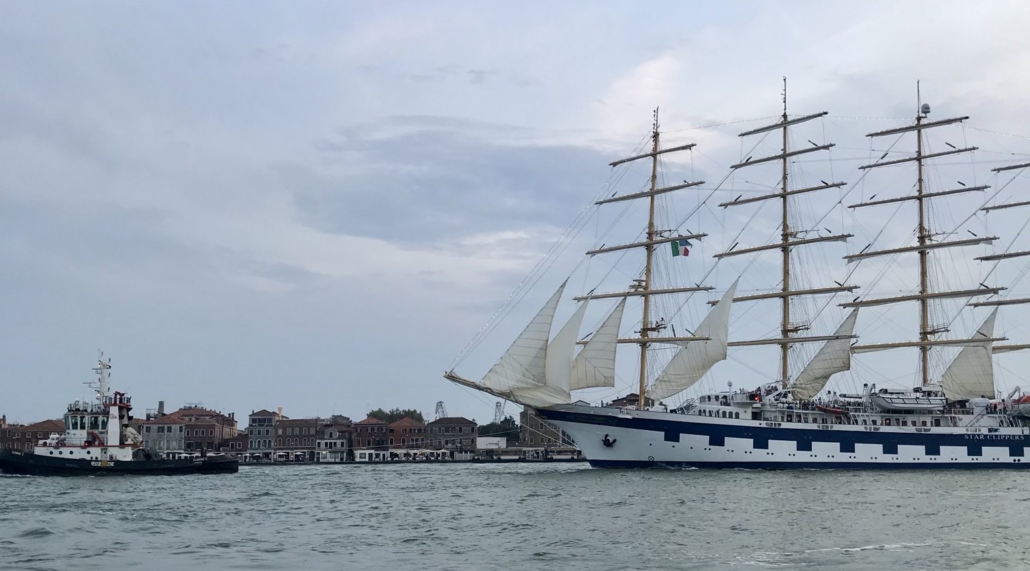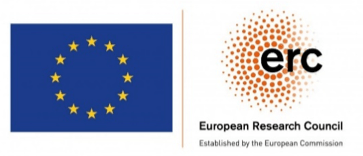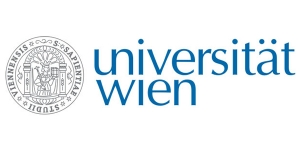Navigating the marine biodiversity regime complex – How will the BBNJ instrument interact with other organizations?
By Arne Langlet and Simon Fellinger
This contribution is part of a MARIPOLDATA blog series on current developments and discussions about marine biodiversity negotiations – more specifically, 1) the negotiations towards an international legally binding instrument under the United Nations Convention on the Law of the Sea on the conservation and sustainable use of marine biological diversity of areas beyond national jurisdiction (BBNJ) and 2) the second part of 15th Conference of the Parties (COP15.2) to the Convention on Biological Diversity (CBD). The recently published article “Not ‘undermining’ who? Unpacking the emerging BBNJ regime complex” informs the BBNJ negotiations by untangling the regime complex of existing international organizations (IOs) that operate in the field of marine biodiversity. We show that up to 52 IOs are perceived as potentially relevant for BBNJ which means that negotiators should carefully formulate the “not undermining” Article 4 of the draft text to strengthen cooperation among IOs in the implementation of the BBNJ agreement. The dataset underlying this publication has recently been made publicly available. 
Will BBNJ become a pilot boat for sustainable ocean governance? (Pilot boat guiding a sailboat, Photo by Philipp Straub)
What does article 4 of the current BBNJ treaty draft refer to?
The BBNJ Agreement is intended to complement and cooperate with other marine biodiversity-related agreements administered by several IOs such as treaty secretariats, intergovernmental organizations, and regional bodies. Art 4.2 of the draft text mandates that the ‘Agreement shall be interpreted and applied in a manner that does not undermine relevant legal instruments and frameworks and relevant global, regional, subregional and sectoral bodies’. The article “Not ‘undermining’ who? Unpacking the emerging BBNJ regime complex” contributed to informing the negotiations by providing a list of IOs that have been associated to the BBNJ negotiations, addressing the “who” – or, more specifically, which IOs negotiators refer to when talking about “not undermining”. The observed multitude of IOs and their complex involvement in the negotiations have led scholars and delegates to describe the situation as a “regime complex”.
What are the effects of regime complexity?
Regime complexity, defined as ambiguity in international standards, inconsistent rules and obligations, and opportunities for “forum shopping,” poses a significant threat to the effectiveness of international cooperation. This is due to actors seeking to take advantage of legal incoherence and competition among international organizations (IOs) to select a negotiation forum that best serves their interests (Alter & Meunier, 2009; Gehring & Faude, 2013). Forum shopping can occur when IOs compete in response to regime complexity and can ultimately undermine the effectiveness of all involved regimes. (Henning & Pratt, 2020, p. 1).
While regime complexity has been shown to pose challenges to international cooperation, research has also revealed positive effects. Increased availability of resources (Kelley, 2009), expertise (Lesage and Van de Graaf, 2013), local knowledge (Yadav & Gjerde, 2020), improved flow of information (Pretty & Ward, 2001), diffusion of practices and management structures (Rosenkopf & Abrahamson, 1999), and increased resilience in times of crisis (Janssen et al., 2006) have been identified as potential benefits. However, these positive effects are dependent on the ability of IOs to engage in cooperation and support each other (Dai, 2002; Perez, Cohen & Schreiber 2019; Sofronova, Holley & Nagarajan, 2014). To maximize the positive effects of regime complexity, it is essential to foster cooperative relationships among IOs, rather than competitive ones. But it remains unclear what factors determine the character of cooperative relationships.
How to facilitate cooperative relationships?
The literature suggests that cooperation between IOs is facilitated by shared goals (Downie, 2021; Carlisle & Gruby, 2019) and a clear hierarchy (Henning & Pratt, 2020). In the case of the BBNJ agreement, the hierarchy is established by the predominant role of UNCLOS, which serves as a reference point for other regimes, including the ISA and the UNFSA. However, principles of environmental governance and conservation remained underdeveloped in UNCLOS, such as the requirements for environmental assessments or the duty to cooperate for the conservation of living resources in the high seas. The BBNJ agreement could specify such principles.
Differentiation, or clarifying differences in scope and tasks, have also been shown to support collaborative relationships and compliance in regime complexes (Henning & Pratt, 2020). In the context of the BBNJ agreement, clear differentiation of scope and tasks with other IOs, such as the FAO or CBD, could provide a basis for institutional cooperation. For example, the description of EBSAs from the CBD could be used to inform MPAs under BBNJ, or the FAO could benefit from clarifying the contribution of BBNJ to achieve the holistic and comprehensive conservation and sustainable use of all marine biodiversity species – including fish – in ABNJ.
Hence, the BBNJ instrument could become an important step to fulfilling UNCLOS’ vision as a ‘constitution of the ocean’ by providing overarching goals under which IOs cooperate with diverse mandates.
The case of RFMOs:
The risk that the current formulation of ‘not-undermining’ may be too wide is particularly present in relation to the exclusion of measures for fish. Observers have warned that if fish is excluded from the scope of BBNJ management in order not to undermine the mandate of FAO or RFMOs, fish may slip ‘through the governance net’, leaving many species that are fished or affected by fishing unregulated and unprotected (Crespo, 2019). Particularly for ABMTs/MPAs it is essential to involve FAO and relevant RFMOs in consultations for effective implementation of protective measures. From the RFMOs perspective, the spatial management provisions in the BBNJ Agreement could serve as a tool for RFMOs to achieve sustainable use objectives. From a BBNJ perspective, it could become a hub to increase engagement between IO secretariats, informed by a robust scientific and technical body. In order to promote cooperation and coordination, the BBNJ text should prioritize coherence and coordination over language on not undermining existing instruments. The International Union on (IUCN) has suggested revising the order of elements in Art 4 to reflect such prioritization.
The case of existing scientific and technical bodies:
The Intergovernmental Panel on Climate Change (IPCC) and the Intergovernmental Platform on Biodiversity and Ecosystem Services (IPBES) are two further bodies with which BBNJ will interact. The knowledge those bodies aggregate is closely connected to the marine biodiversity regime, as climate change and biodiversity loss are interlinked – on land and in the ocean. Including the expertise of those bodies may have helpful effects for the identification of MPAs, particularly at the beginning of implementation of the treaty, when the BBNJ institutions build their own expertise while many characteristics of the scientific and technical body will likely be defined by the COP in the future.
Further, to strengthen the role of the scientific and technical body that will be established through article 49 of the BBNJ instrument, drawing on existing knowledge practices and lessons learned from IPCC and IPBES should be taken into account (Borie et al., 2021). Both bodies have proven track records for independently aggregating diverse and complex knowledge from a large network of experts, and for communicating it to decision-makers, which will be a key task for the BBNJ scientific and technical body. Yet, this body needs to be designed for the specific context of marine biodiversity (Beck et al., 2014). Strong institutional links between IPCC, IPBES and the future BBNJ scientific and technical body can help to enhance the knowledge base for decision-making by ensuring exchange and steady flow of information (Pretty & Ward, 2001).
References:
Alter, K. J., & Meunier, S. (2009). The Politics of International Regime Complexity. Perspectives on Politics, 7(1), 13-24. doi:10.1017/s1537592709090033
Beck, S., Borie, M., Chilvers, J., Esguerra, A., Heubach, K., Hulme, M., Lidskog, R., Lövbrand, E., Marquard, E., Miller, C., Nadim, T., Neßhöver, C., Settele, J., Turnhout, E., Vasileiadou, E., & Görg, C. (2014). Towards a Reflexive Turn in the Governance of Global Environmental Expertise. The Cases of the IPCC and the IPBES. GAIA – Ecological Perspectives for Science and Society, 23(2), 80–87. https://doi.org/10.14512/gaia.23.2.4
Borie, M., Mahony, M., Obermeister, N., & Hulme, M. (2021). Knowing like a global expert organization: Comparative insights from the IPCC and IPBES. Global Environmental Change, 68(12), 102261. https://doi.org/10.1016/j.gloenvcha.2021.102261
Carlisle, K., & Gruby, R. L. (2019). Polycentric systems of governance: A theoretical model for the commons. Policy Studies Journal, 47(4), 927-952.
Crespo, G. O., Dunn, D. C., Gianni, M., Gjerde, K. M., Wright, G., & Halpin, P. N. (2019). High-seas fish biodiversity is slipping through the governance net. Nat Ecol Evol, 3(9), 1273-1276. doi:10.1038/s41559-019-0981-4
Dai, X. (2002). Information Systems in Treaty Regimes. World Politics, 54(4), 405-436. doi:10.1353/wp.2002.0013
Downie, C. (2021). Competition, cooperation, and adaptation: The organizational ecology of international organizations in global energy governance. Review of International Studies, 1-21. doi:10.1017/S0260210521000267
Gehring, T., & Faude, B. (2013). The dynamics of regime complexes: Microfoundations and systemic effects. Global governance, 19(1), 119-130.
Henning, C. R., & Pratt, T. (2020). Hierarchy and differentiation in international regime complexes: A theoretical framework for comparative research. Unpublished manuscript.
Janssen, M., Bodin, Ö., Anderies, J. M., Elmqvist, T., Ernstson, H., Mcallister, R., R. J. , . . . Ryan, P. (2006). Toward a Network Perspective of the Study of Resilience in Social-Ecological Systems. Ecology and Society, 11(1), 1-20. doi:10.5751/ES-01462-110115
Kelley, J. (2009). The More the Merrier? The Effects of Having Multiple International Election Monitoring Organizations. Perspectives on Politics, 7(1), 59-64. doi:10.1017/S1537592709090094
Langlet, A., & Vadrot, A. B. M. (2023). Not ‘undermining’ who? Unpacking the emerging BBNJ regime complex. Marine Policy, 147, 105372. doi:https://doi.org/10.1016/j.marpol.2022.105372
Lesage, D., & van de Graaf, T. (2013). Thriving in complexity? the OECD system’s role in energy and taxation. Global governance, 19, 92.
Perez, O., Cohen, R., & Schreiber, N. (2019). Governance through Global Networks and Corporate Signaling. Regulation & Governance, 13(4), 447-469. doi:10.2139/ssrn.3265793
Pretty, J., & Ward, H. (2001). Social Capital and the Environment. World Development, 29(2), 209-227. doi:10.1016/S0305-750X(00)00098-X
Sofronova, E., Holley, C., & Nagarajan, V. (2014). Environmental Non-Governmental Organizations and Russian Environmental Governance: Accountability, Participation and Collaboration. Transnational Environmental Law, 3(2), 341-371. doi:10.1017/S2047102514000090
Rosenkopf, L., & Abrahamson, E. (1999). Modeling Reputational and Informational Influences in Threshold Models of Bandwagon Innovation Diffusion. Computational & Mathematical Organization Theory, 5(4), 361-384. doi:10.1023/A:1009620618662
Yadav, S. S., & Gjerde, K. M. (2020). The ocean, climate change and resilience: Making ocean areas beyond national jurisdiction more resilient to climate change and other anthropogenic activities. Marine Policy, 122, 104184. doi:https://doi.org/10.1016/j.marpol.2020.104184


